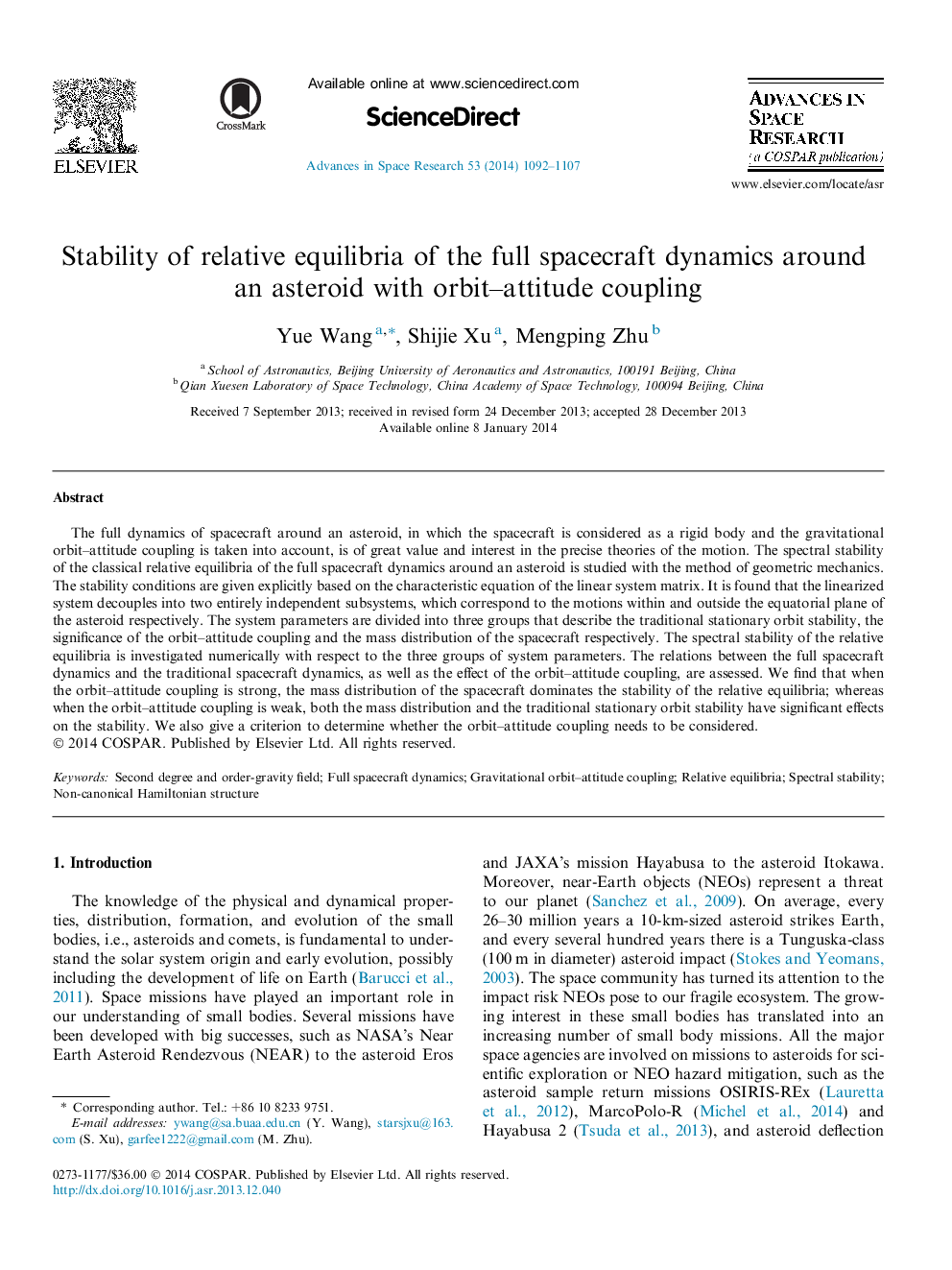| Article ID | Journal | Published Year | Pages | File Type |
|---|---|---|---|---|
| 10694335 | Advances in Space Research | 2014 | 16 Pages |
Abstract
The full dynamics of spacecraft around an asteroid, in which the spacecraft is considered as a rigid body and the gravitational orbit-attitude coupling is taken into account, is of great value and interest in the precise theories of the motion. The spectral stability of the classical relative equilibria of the full spacecraft dynamics around an asteroid is studied with the method of geometric mechanics. The stability conditions are given explicitly based on the characteristic equation of the linear system matrix. It is found that the linearized system decouples into two entirely independent subsystems, which correspond to the motions within and outside the equatorial plane of the asteroid respectively. The system parameters are divided into three groups that describe the traditional stationary orbit stability, the significance of the orbit-attitude coupling and the mass distribution of the spacecraft respectively. The spectral stability of the relative equilibria is investigated numerically with respect to the three groups of system parameters. The relations between the full spacecraft dynamics and the traditional spacecraft dynamics, as well as the effect of the orbit-attitude coupling, are assessed. We find that when the orbit-attitude coupling is strong, the mass distribution of the spacecraft dominates the stability of the relative equilibria; whereas when the orbit-attitude coupling is weak, both the mass distribution and the traditional stationary orbit stability have significant effects on the stability. We also give a criterion to determine whether the orbit-attitude coupling needs to be considered.
Related Topics
Physical Sciences and Engineering
Earth and Planetary Sciences
Space and Planetary Science
Authors
Yue Wang, Shijie Xu, Mengping Zhu,
